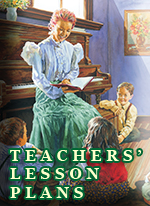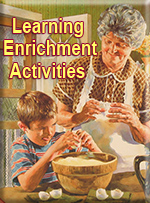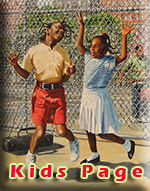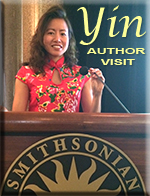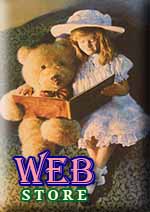 |
|
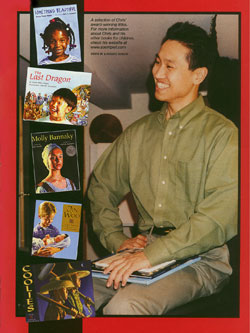 |
|
March
2002, Volume 32. No.6
Chris Soentpiet:
"Moving
Beyond Words"
This wonderfully talented illustrator brings a humanistic aspect to his catalog of work that spans different cultures, people and periods of history.
Chris Soentpiet (pronounced soon-peet) is a masterful young illustrator whose work has already earned him distinctions such as the Society of Illustrators highest honor - the Gold Medal - the International Reading Association Book of the Year Award and the American Library Association Notable Award. Despite his stringent determination to feature factual details accurately and his oftentimes serious and straightforward depiction of historical events in his illustrations, Chris Soentpiet is surprisingly easygoing and has a lightning sense of humor - "You know, I put tissue paper over my drawings to protect them from people like you," he joked as we pored over his most recent illustrations.
An eight-year-old Chris was adopted from Korea by an American family who lived in Hawaii and later moved to Oregon. Possibly due to this early migration from both his country of birth and background, his books for children reflect a broad range of cultures and people as well as periods in history. Chris is intent on not being pigeonholed as an artist who only illustrates the stories of a specific culture. "Because I'm Korean doesn't mean I'm limited to just doing Korean books," he told us. "I'm glad that right from the beginning of my career I was able to illustrate many different cultures." When choosing the manuscripts he agrees to illustrate, Chris' requirements are fairly basic but also convey an important message to children - "I think I am drawn to stories that are more humanistic, where someone has to earn something through labor or hard work," he commented.
A closet full of costumes. While visiting his studio last winter, we learned a little bit more about Chris' approach to illustrating. Because he has worked on a number of "period" picture books, such as Molly Bannaky (Houghton Mifflin, 1999), Peacebound Trains (Houghton Mifflin, 1996) and More Than Anything Else (Orchard Books, 1995), Chris has stockpiled a number of costumes in which to outfit the models he photographs for his illustrations.
After choosing and then photographing the models wearing these costumes, he sketches the illustration in a storyboard format - a technique commonly used in films and animation. When looking over the sketches Chris showed us, we noticed small triangles in certain areas which we learned signify the direction the light source would be coming from in the final illustration. Chris then creates a larger pencil sketch which he uses to show the publisher in order for them to double-check the sketch for historical accuracy. Once he gets the go-ahead, Chris works with watercolors.
Awakening inspiration. In addition to researching and illustrating, Chris visits about 30 schools on average each year (in the past three years, he has traveled to 14 different countries, conducting research for his illustrations and visiting international schools). "I always try to make sure the kids know another artist has inspired me and awakened something in me that needed to illustrate children's books," he said.
The "inspiration" Chris is referring to is children's book author and illustrator, Ted Lewin. The two met in 1992 while Chris was still a student at the Pratt Institute in New York City. They've since become very close friends. In fact, Ted has become a "muse" of sorts for Chris and his image has popped up in several of Chris' book illustrations. "Ted makes a terrific mean face," Chris laughed (you can see Ted as a yelling foreman in Coolies, Philomel, 2001 and a stem cook in Molly Bannaky. Ted's wife Betsy, also a children's book author, makes an appearance as the older Molly Bannaky).
Chris met with him after attending a lecture of Ted's at Pratt and later talked to him one-on-one about the tools and techniques of book illustration. Soon after, Chris was inspired to write his first book for children, Around Town (HarperCollins, 1994), based on his experiences seeing New York City for the first time. "Growing up in suburban Oregon, I had never seen anything like high-rise buildings or someone juggling in the subways and other such things that are so commonplace in New York;' he said. "It was such a fun book for me to do for my first."
The story within the story. Even with his busy schedule, Chris is careful not to spread himself too thin and prefers to devote himself to one project at a time. "There's so much detail in each painting and I'm a firm believer in letting the environment tell the story and moving beyond words." This practice of taking an author's story and telling a story within the story is one that Chris has perfected. Each of his illustrations go far beyond the descriptions of the text, helping each of the stories to lushly unfold even further.
A book that holds special importance with Chris is his second collaboration with prolific children's author, Eve Bunting Jin Woo (Houghton Mifflin, 2001) is the story of David, who is uneasy about the arrival of his new baby brother from Korea. He fears that with another child in the family, his mother and father won't be able to love him as much as they did when he was an only child. It's only after David receives a special note that his new brother "asked" his mother to write to him, does David realize that his parents have enough love in their hearts for both of them.
During this joint effort with Eve (they also worked on So Far From the Sea, Clarion, 1998), Chris was happy to find someone who looked at books the same way he did, "We are very much alike in that we both choose books with a social conscience, and these are stories with issues that matter to kids and will therefore stay around for a while."
Honoring our ancestors. With all of his awards and critical success, it's Chris' latest book, Coolies, of which he is most proud. This incredible story stands as a tribute to early Chinese Americans and also marks his first collaboration with his wife, Yin. For the research involved with Coolies, they traveled to China so Chris could see the port from which the Chinese railroad laborers (who other workers cruelly referred to as "coolies") left to reach California. He also wanted to observe the mannerisms of the people of Canton. As always, he was meticulous in his attention to the smaller details and made note of things like how Cantonese people take food from their own plate and pass it to the plate of someone else as a loving gesture. He incorporated this into his illustrations - again taking storytelling a step further by depicting a visual that is not mentioned in the text.
Coolies opens with a grandmother and her young grandson celebrating the Ching Ming Festival in which they pay respect to their ancestors. She begins to tell the boy the story of her great-grandfather and his brother and how they left China and journeyed to this country to help build the transcontinental railroad. This book was an especially personal project because Chris used Yin's family as the models for many of the main characters. "For us to pull this project off together was just amazing," Chris said. "I'm a very lucky person to be able to do what I do."
KATHERINE ROMANO
Copyright Early Years, Inc. Mar 2002
Provided by ProQuest Information and Learning Company. All rights Reserved
